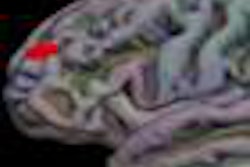MRI scans indicate that women who suffer from migraine headaches have more brain lesions than men, but neither gender experiences any cognitive decline from the affliction, according to a study published in the November 14 issue of the Journal of the American Medical Association.
Even among women, there were differences in the degree of the lesions, called deep white-matter hyperintensities. In the study, 77% of women with migraines exhibited deep white-matter hyperintensities, compared with only 60% of women in a healthy control group, wrote Dr. Inge Palm-Meinders, from the department of radiology at Leiden University Medical Center in the Netherlands, and colleagues (JAMA, Vol. 308:18, pp. 1889-1897).
Perhaps the most encouraging findings were that MR images among women did not show a significantly higher progression of infarctlike brain lesions associated with the migraines, and neither men nor women experienced a decline in cognitive functions due to migraines.
CAMERA-1 study
The researchers began by reviewing baseline MRI results from the original participants in the Cerebral Abnormalities in Migraine, an Epidemiological Risk Analysis (CAMERA-1) in 2000. The cohort included 295 individuals with migraines and 140 age- and sex-matched controls who were randomly selected from a community-based study of the general population who received MRI scans.
All participants were invited to return for follow-up MRI scans in 2009 as part of the CAMERA-2 study, which included a telephone interview to update patient information, a brain MRI scan, a physical examination, and cognitive testing similar to what the individuals received as part of the CAMERA-1 study.
In the latest study, the researchers determined primary outcomes by measuring changes in the number and volume of deep white-matter hyperintensities as seen on follow-up MRI in individuals with migraine, and compared those changes with updated results from the healthy control group. In addition, Palm-Meinders and colleagues noted any progression in posterior circulation territory infarctlike lesions and infratentorial hyperintensities.
In the follow-up study, the researchers were able to connect with 411 (95%) of the original 435 CAMERA-1 participants. A total of 286 individuals (66%) received a follow-up MRI scan. Of that sample, 114 had migraine with aura (in which a person notices symptoms before the headache begins), 89 had migraine without aura, and 83 were in the control group.
Gender comparison
In analyzing deep white-matter hyperintensities as seen on MRI, Palm-Meinders and colleagues found no differences between baseline and follow-up results among men in the migraine group and men in the control group.
However, women in the migraine group showed greater deep white-matter hyperintensity volume at baseline and at follow-up compared to women in the control group. Deep white-matter hyperintensity volume for women with migraines was 0.02 mL at baseline, compared with 0.00 mL for women in the control group. At follow-up, women with migraines had deep white-matter hyperintensity volume of 0.09 mL, compared with 0.04 mL for those in the control group.
The incidence of deep white-matter hyperintensity progression also was greater among women with migraine without aura (83%). Continuing that trend, women in the migraine group had a higher incidence of progression (23%) than women in the control group (9%).
The researchers attributed the increase in total deep white-matter hyperintensity volume among women with migraine to more new lesions rather than an increase in the size of pre-existing lesions.
In the migraine group, there was an incidence of 10 or more new lesions among 43 (43%) of 145 participants, compared with five (9%) of 57 women in the control group. Deep white-matter hyperintensities also were more evenly distributed among women with migraines.
The follow-up MRI results also showed that infarctlike lesions present during the baseline scan were also evident at follow-up. However, there was no significant association of migraine with new posterior circulation territory infarctlike lesions between the two groups.
In addition, 18 (9%) subjects in the migraine group with posterior circulation territory infarct had a less favorable cardiovascular risk profile than the 185 participants (91%) with no such infarct.
People with infarctlike lesions also were older, with a mean age of 62 years, compared with 57 years for individuals without infarctlike lesions. They also had a higher prevalence of clinically diagnosed stroke (22% versus 3%, respectively) or hypertension (67% versus 33%, respectively).
Based on the findings, Palm-Meinders and colleagues recommended additional research, adding that "functional implications of MRI brain lesions in women with migraine and their possible relation with ischemia and ischemic stroke warrant further research."



















